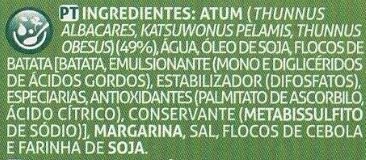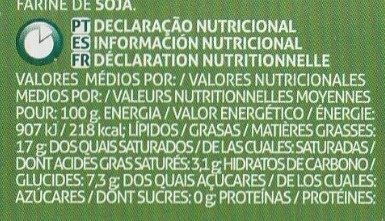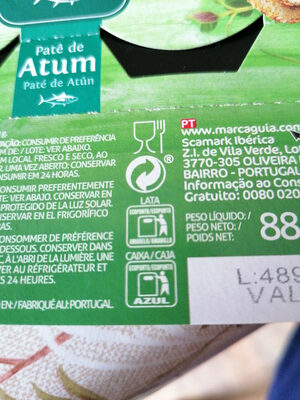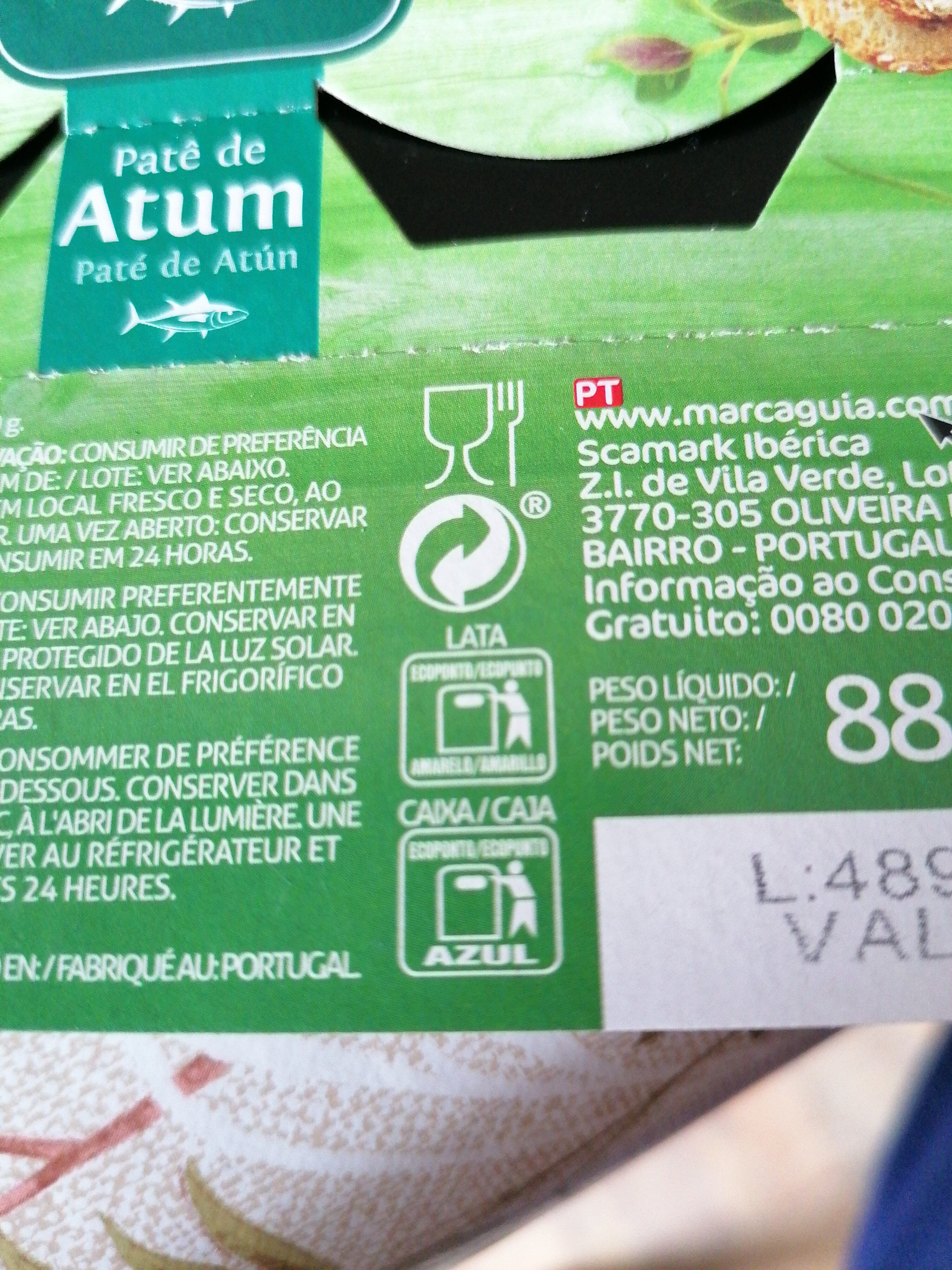Patê de Atum - Pêche Océan - 88 g (4 x 22 g)
This product page is not complete. You can help to complete it by editing it and adding more data from the photos we have, or by taking more photos using the app for Android or iPhone/iPad. Thank you!
×
Barra-kodea: 5606456015138 (EAN / EAN-13)
Izen arrunta: préparation à base de thon
Kopurua: 88 g (4 x 22 g)
Ontziratzea: en:Metal, en:Can, en:Cardboard
Markak: Pêche Océan, Marca Guia
Kategoriak: en:Seafood, en:Fishes and their products, en:Canned foods, en:Fishes, en:Canned fishes
Etiketak, ziurtagiriak, sariak:
en:Green Dot, pt:Ecoponto-amarelo, pt:Ecoponto-azul


Manufacturing or processing places: Portugal
Traceability code: PT C 240 1P CE
Dendak: E.Leclerc
Matching with your preferences
Report a problem
Datuen iturria
Product added on by gildubs
Last edit of product page on by october-food-facts.
Produktuaren orria -gatik editatua inf, openfoodfacts-contributors, packbot, yuka.sY2b0xO6T85zoF3NwEKvlmZnVvn6-BDUHj7WnUvXzfneAMzxeM1X05faHqs.












